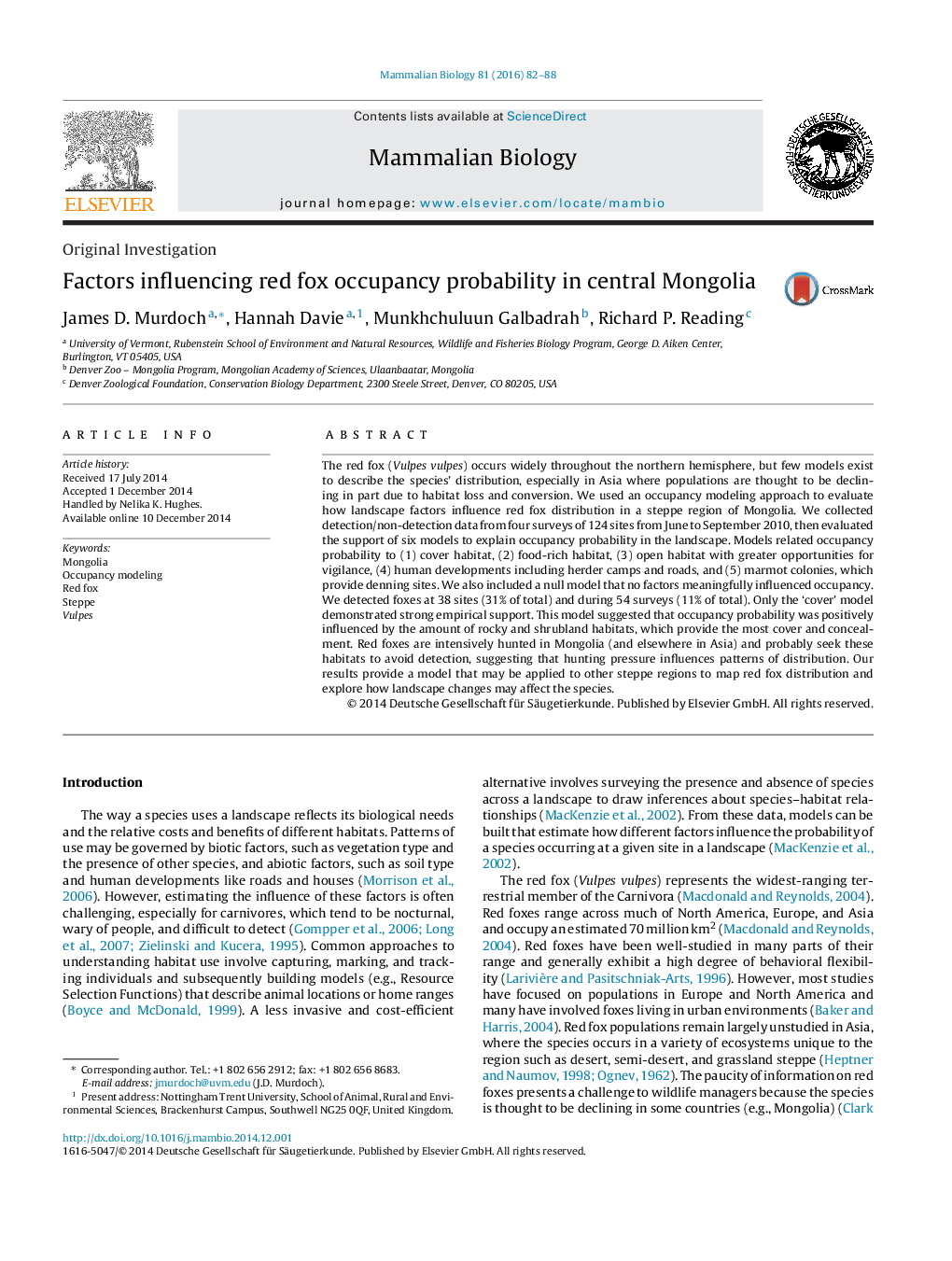| Article ID | Journal | Published Year | Pages | File Type |
|---|---|---|---|---|
| 2193359 | Mammalian Biology - Zeitschrift für Säugetierkunde | 2016 | 7 Pages |
The red fox (Vulpes vulpes) occurs widely throughout the northern hemisphere, but few models exist to describe the species’ distribution, especially in Asia where populations are thought to be declining in part due to habitat loss and conversion. We used an occupancy modeling approach to evaluate how landscape factors influence red fox distribution in a steppe region of Mongolia. We collected detection/non-detection data from four surveys of 124 sites from June to September 2010, then evaluated the support of six models to explain occupancy probability in the landscape. Models related occupancy probability to (1) cover habitat, (2) food-rich habitat, (3) open habitat with greater opportunities for vigilance, (4) human developments including herder camps and roads, and (5) marmot colonies, which provide denning sites. We also included a null model that no factors meaningfully influenced occupancy. We detected foxes at 38 sites (31% of total) and during 54 surveys (11% of total). Only the ‘cover’ model demonstrated strong empirical support. This model suggested that occupancy probability was positively influenced by the amount of rocky and shrubland habitats, which provide the most cover and concealment. Red foxes are intensively hunted in Mongolia (and elsewhere in Asia) and probably seek these habitats to avoid detection, suggesting that hunting pressure influences patterns of distribution. Our results provide a model that may be applied to other steppe regions to map red fox distribution and explore how landscape changes may affect the species.
